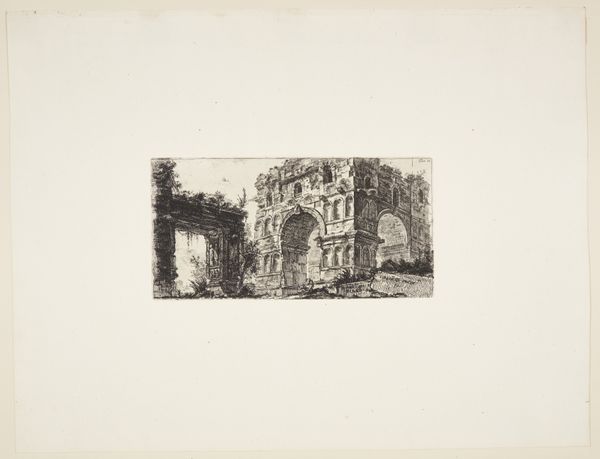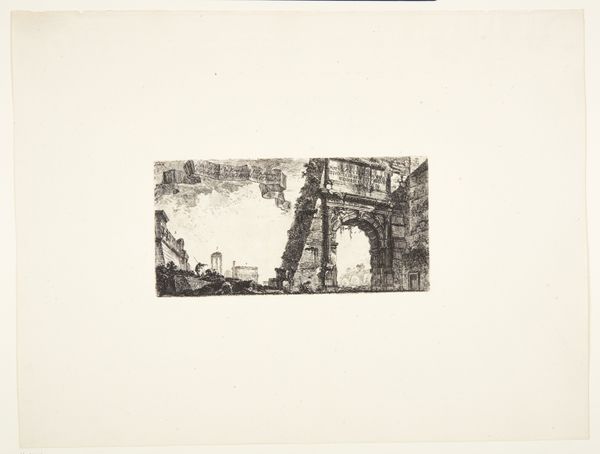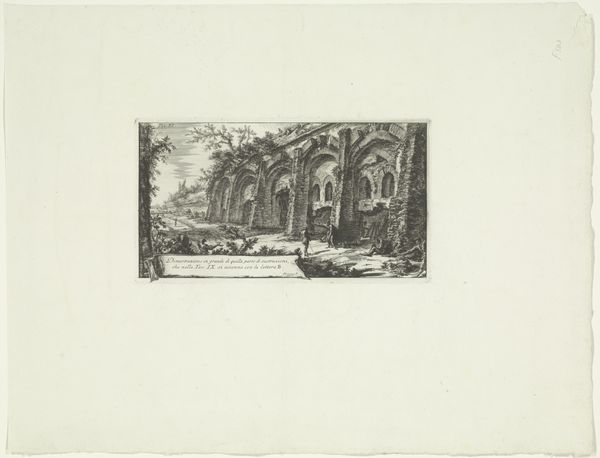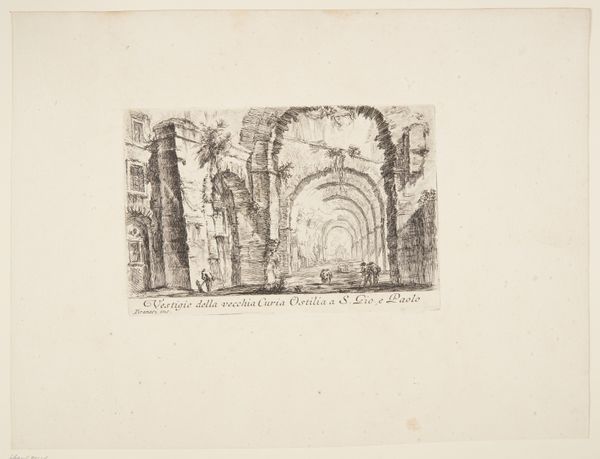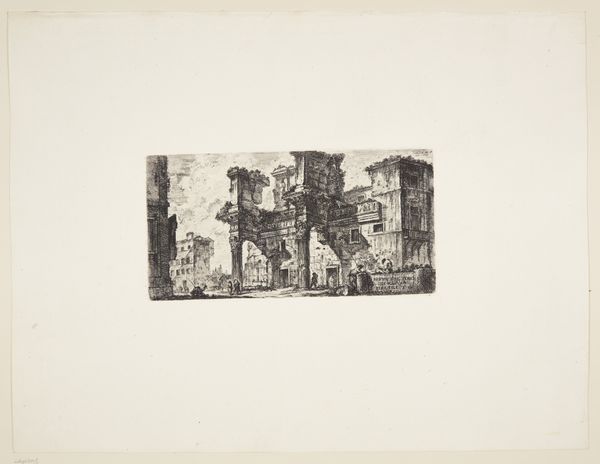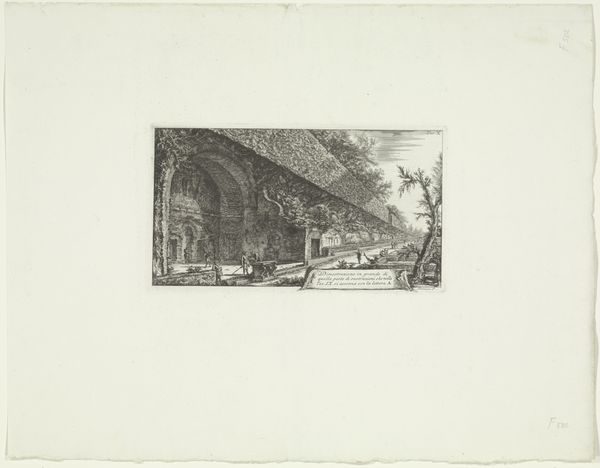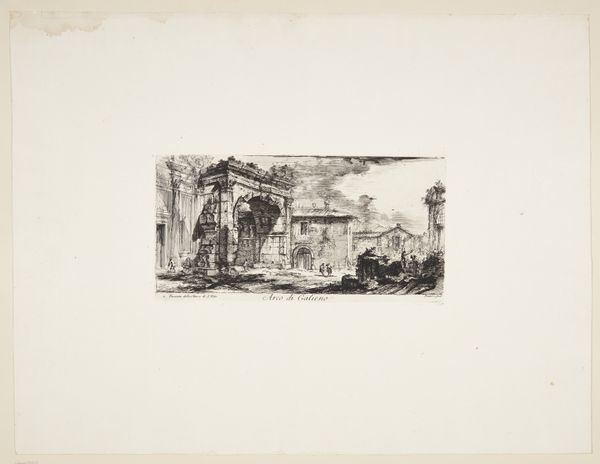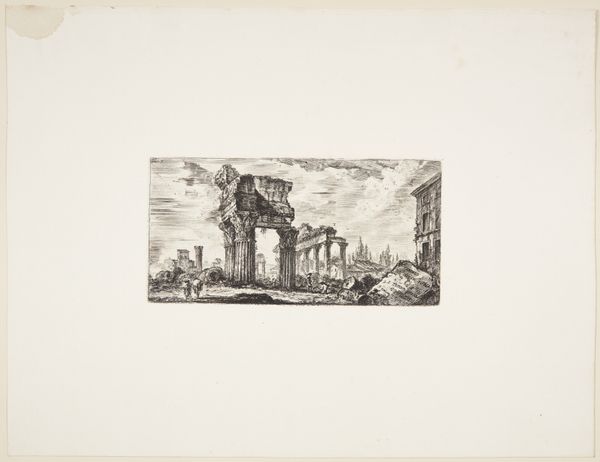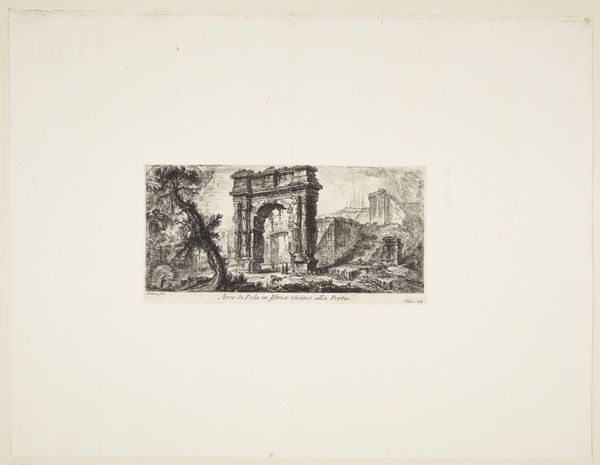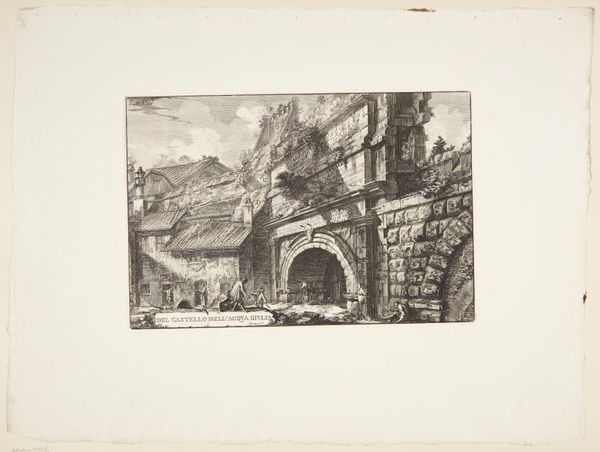
Arch of Drusus at the Porta San Sebastiano in Rome 1748
0:00
0:00
print, etching, engraving, architecture
# print
#
etching
#
landscape
#
romanesque
#
engraving
#
architecture
Dimensions: 134 mm (height) x 267 mm (width) (plademaal)
Curator: Ah, the weight of history captured in monochrome. I find myself lost in the stark contrast of Piranesi’s etching, "Arch of Drusus at the Porta San Sebastiano in Rome" from 1748. Editor: Ruin porn, basically. The texture is incredible though, almost visceral. You can practically feel the crumbling stone under your fingertips. All that density makes you wonder about the sheer labour involved in quarrying, shaping, and erecting those stones, only for it all to, inevitably, decay. Curator: Indeed. Piranesi had such a dramatic way of framing these ancient structures, didn't he? There's a sense of grandeur but also melancholic decay. I get lost imagining the Roman Empire's dreams fading with each crumbled brick. Editor: It's about access too, isn't it? These prints would have been relatively cheap compared to an original painting or sculpture. So, Piranesi was distributing these romantic visions of the past to a wider audience, fostering a certain cultural value around Roman antiquity and architectural prowess that he also capitalized on when selling modern recreations as souvenirs. Curator: True. He democratized the dream of Rome, accessible by all through printed lines. The stark light also contributes to that dreaminess, almost a phantasm. What remains against the endless skies of time. Do you ever feel like Piranesi's Rome is less about documenting reality and more about evoking a feeling? Editor: Absolutely. He's romanticizing labor and power relations by focusing on the "end result" so to speak. We forget the exploitation embedded into architecture because time gives buildings a sense of majesty as they begin to be valued as ruins. This is where we forget all the hands that were busy with shaping the bricks into that beautiful shape. That texture is important though, it highlights the skill involved and draws us into the narrative, a kind of nostalgia that is crafted. Curator: A seductive nostalgia, certainly. I leave this piece today with the sense that time heals but never quite erases—and perhaps, it shouldn’t. Editor: Precisely. It reminds us how things are fabricated to begin with. The cultural worth that can change shape once its production method fades from memory or from sight. Fascinating stuff.
Comments
No comments
Be the first to comment and join the conversation on the ultimate creative platform.
